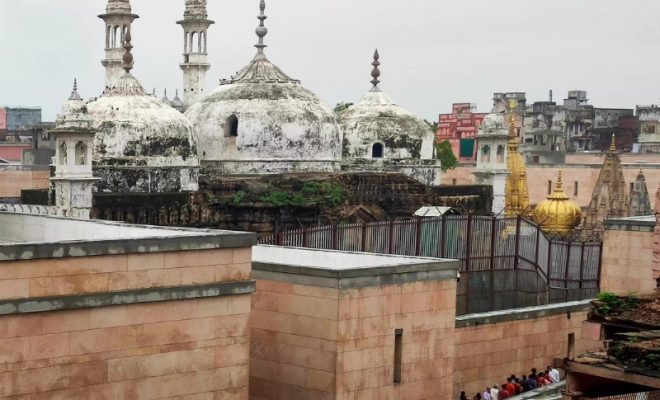ASI Survey Discovers Broken Idols Of Hindu Deities At Gyanvapi Site

The Archaeological Survey of India (ASI) has found evidence that proves that there was a Hindu temple ‘Gyanvapi Mandir’ existed before any Mosque. This discovery is based on the recent survey done by the ASI team.
The ASI’s detailed 839-page report, given to both Hindu and Muslim groups, supports the claim that the Gyanvapi was built after a temple was destroyed.
Also Read: National Voters’ Day 2024: Know The Power Of Your One Vote
Advocate Hari Shankar Jain, representing the Hindu side, shared key findings from the report. The structure shows carvings of Hindu gods and goddesses, and broken idols were also found.
There’s an inscription by Aurangzeb stating that the mosque was built after tearing down a temple. Aurangzeb was a cruel invader who ruled in the 17th century.
The Western wall of the structure is about 5000 years old and belongs to a Hindu temple. The ASI found 34 inscriptions in languages like Devanagari, Grantha, Telugu, and Kannada, showing the site’s Hindu origins.
These inscriptions were reused in the mosque’s construction and repair, indicating that the earlier Gyanvapi Temple was demolished for building the mosque. Deities’ names like Janardana, Rudra, and Umeshwara were found in these inscriptions.
The ASI also studied the pillars and plasters used in the mosque. They found that these materials were taken from the original Hindu temple for expanding the mosque and building its courtyard, known as ‘Sahan’.
A district judge has ordered that both Hindu and Muslim sides should receive copies of the ASI report. The report is crucial for the Gyanvapi case in the fast-track court of Varanasi, which is deciding on the original ownership of the Gyanvapi site.
Following the release of the report of the Archaeological Survey of India, security around the Gyanvapi Mosque in Varanasi has been increased.
There are so many findings that are significant evidence as they reveal a Hindu temple’s presence before the mosque was built, adding a new dimension to the historical and cultural understanding of the site.



